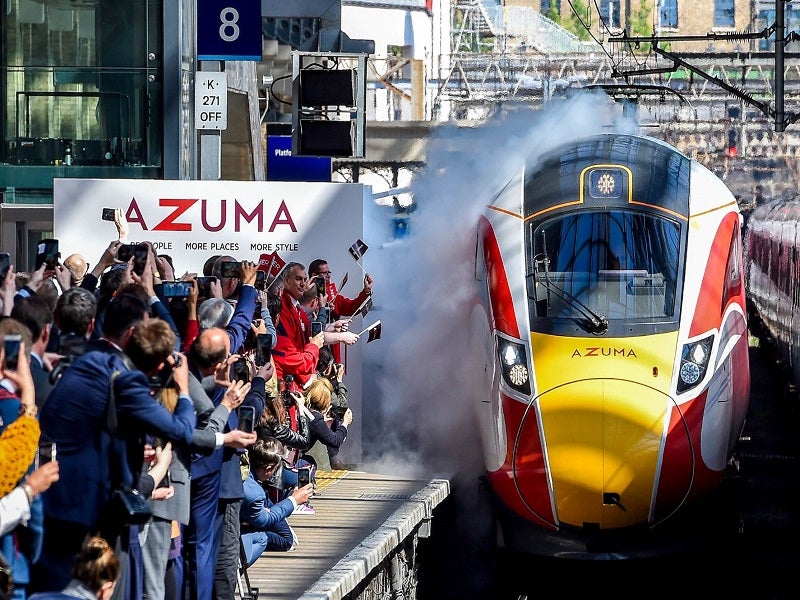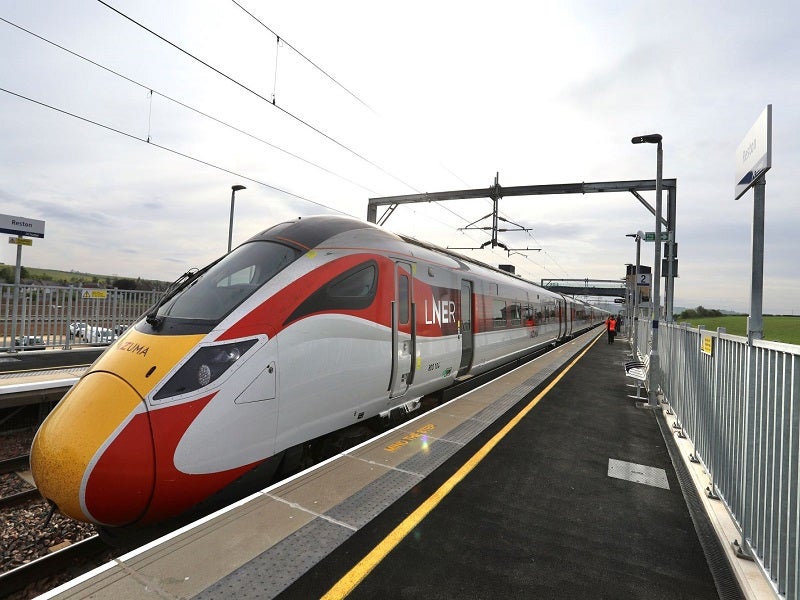UK-based train operating company LNER’s new Azuma Class 800 trains have been running on the East Coast Main Line in the UK since May 2019. The new trains are part of the UK rail network’s £5.7bn ($7.71bn) Intercity Express Programme.
The first train of the class was unveiled in March 2016 while the first test run of the Azuma train took place on 16 August 2017, in Scotland, as part of a rail connectivity improvement programme between Edinburgh and London. The trains are operated by London North Eastern Railway (LNER) after taking over Virgin Trains East Coast in June 2018.
The new fleet reduced the journey times between Edinburgh and London by 22 minutes, bringing the total journey time down to just four hours. The trains are the first cross-border fleet passing through stations across the north and east of the UK.
The Azuma trains were designed and manufactured by Hitachi, a rolling stock manufacturer based in Japan. The body shells were fabricated in Kasado, Japan, and transported to its rail vehicle manufacturing facility located in Newton Aycliffe, County Durham.
Intercity Express Programme details
The UK Department for Transport’s (DfT) Intercity Express programme called for the substitution of the current fleet on the East and West Coast Main Lines. The programme involved the replacement of the Intercity 125 models on the East Coast Main Line by 2018.
Delivery of all the trains that operate on the Great Western and East Coast Main Lines was completed by 2020.
Azuma train fleet details
The new Azuma trains, which run between London, Leeds, York, Newcastle, and Edinburgh, were designed to connect locations in a more pleasant, speedier, and environmentally responsible manner.
The Azuma fleet is the first to operate under the UK government’s IEP and is one of the most advanced passenger trains on the UK rail network. The new trains are capable of accelerating faster than the current trains and offer more comfort and interior space.
The 65-train Azuma fleet is a combination of dual-mode diesel and electric trains, including 13 nine-car, ten five-car dual-mode units, 12 five-car, and 30 nine-car electric trains.
The new trains offer an additional 12,200 seats on the network and increases the peak time capacity into King’s Cross station by approximately 28%. The trains provide direct routes to new destinations such as London-Middlesbrough and support increase in services from London to Bradford, Harrogate, and Lincoln.
Design and facilities of Azuma trains
The trains operate at a speed of up to 125mph but have the potential to run up to 140mph. They are capable of reaching 125mph in approximately four minutes and 40 seconds, compared to five minutes and 40 seconds for the existing electric-powered trains, and seven minutes for the diesel-powered trains.
The new Azuma trains generate less emissions, making them one of the most environment-friendly trains in the UK. They also offer onboard buffet cars to provide a better passenger experience.
The trains offer facilities such as faster and free Wi-Fi, power sockets for every seat, and large overhead luggage spaces.
Interiors of the Azuma trains
Hitachi contracted DCA Design, a company based in Warwick, to design the interiors of the new trains. There are ergonomically designed seats in the first and standard classes, new carpets, and more legroom.
The interiors of the Azuma trains include a mood-lighting feature, which is a unique system installed for the first time on UK trains.
The trains also feature sliding doors installed between carriages.
Traffic light reservation system
An improved version of the light reservation system is equipped in the new Azuma trains, which helps the passengers to check whether a seat is reserved or not.
The red light indicates that the seat is reserved, and amber indicates that the seat is currently available but has been reserved for a station later in the journey. The green light shows that the seat is available up to the final destination.






